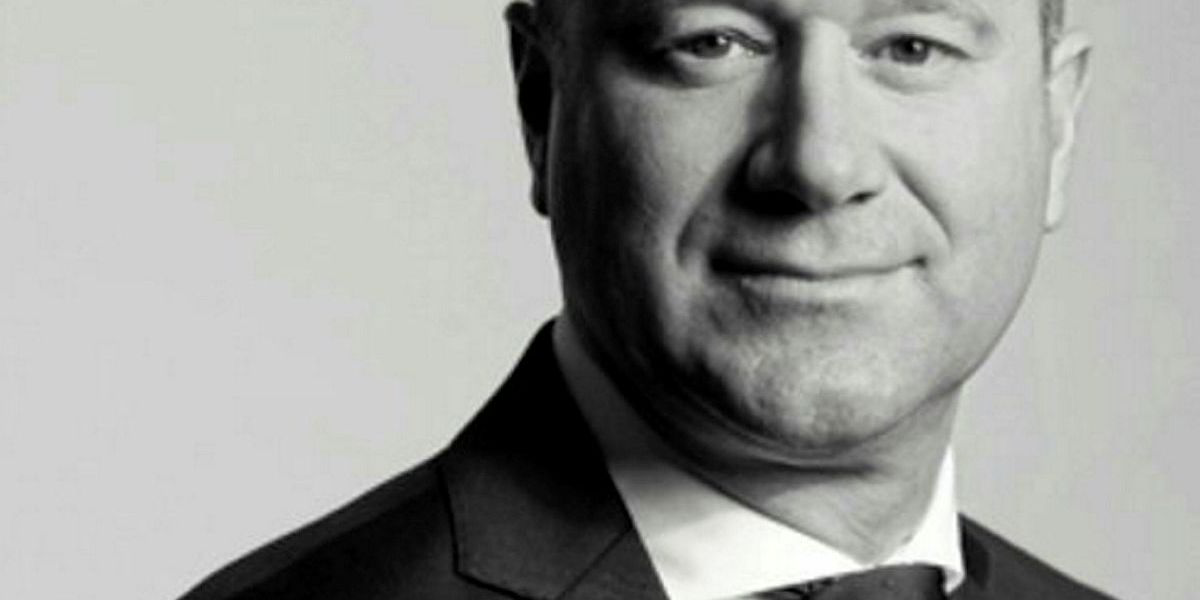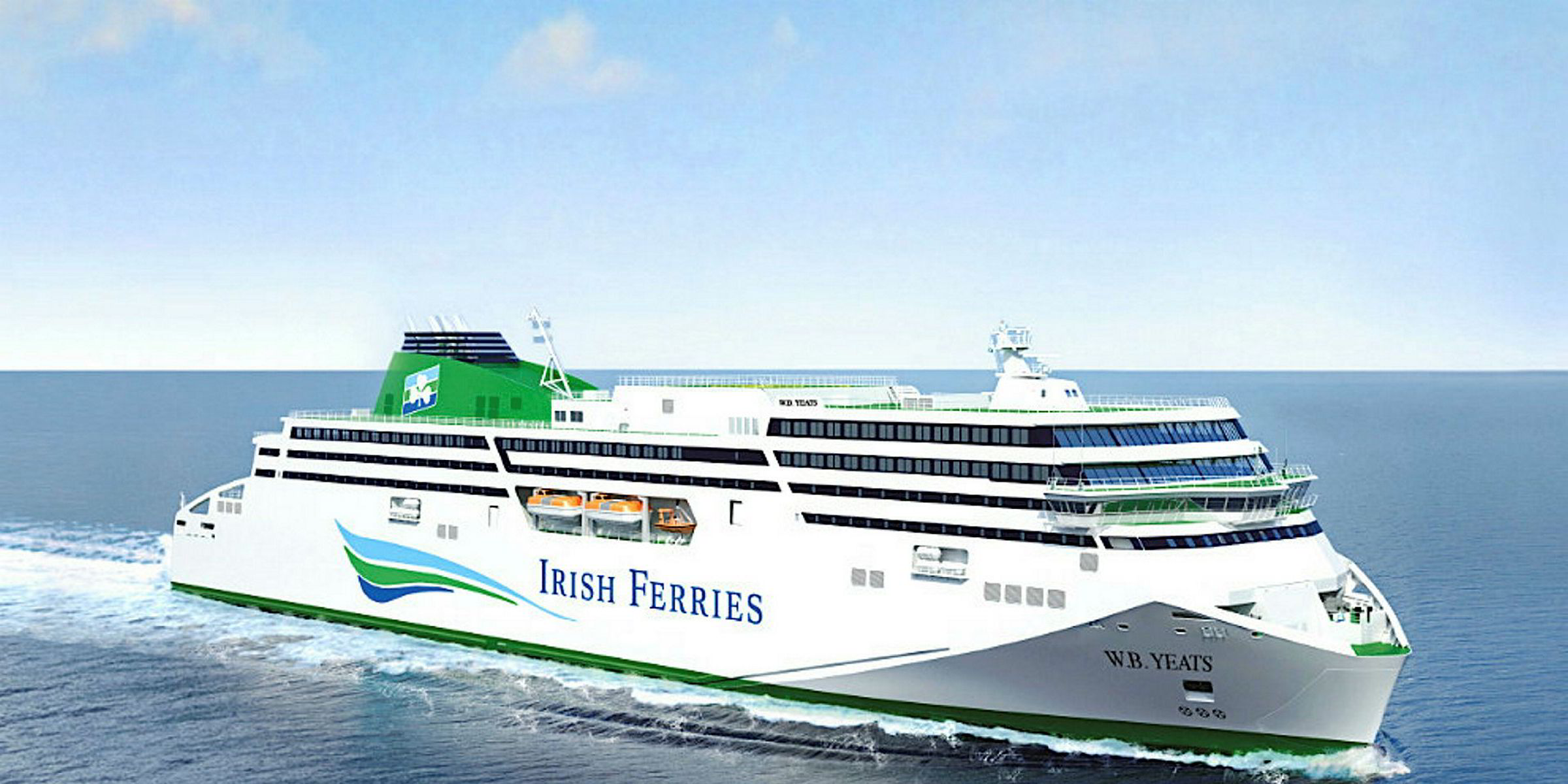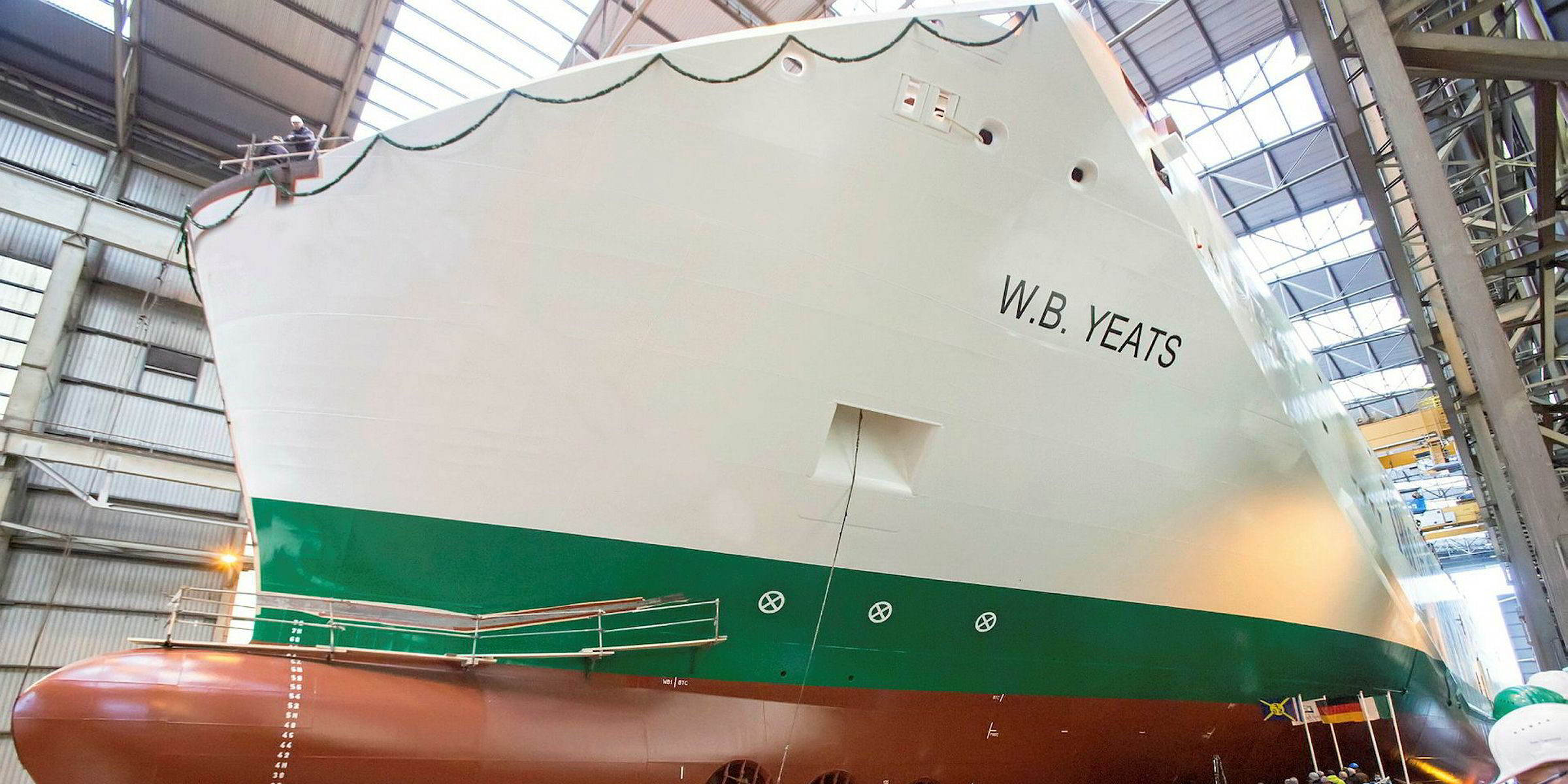When Irish Continental Group (ICG) announced plans to invest €165.2m ($205m) in a new cruise ferry, it marked another milestone for Germany’s Flensburger Schiffbau-Gesellschaft (FSG) in its strategic repositioning in the market.
The cruise ferry, accommodating 1,800 passengers and crew, helps establish FSG as another significant player in the German passengership construction market, which is led by cruiseship specialist Meyer Werft and now MV Werften.
Cruise ferries have come a long way and today mirror many of their luxury cruiseship cousins with a la carte restaurants, club-class lounges, bars, cinemas and retail outlets.
ICG’s Irish Ferries is investing a total of €315m in its Irish Sea operations if another newbuilding — the WB Yeats, which is set for delivery from FSG in June 2018 — is also included.
That €144m order was placed in May 2016 and involves an 1,885-passenger cruise ferry with 440 cabins.
FSG also has a letter of intent from Australia’s TT-Line for two new cruise ferries scheduled to enter service in 2021. They will each accommodate 2,000 passengers and have 284 cabins, as well as more than 2,500 lane metres for vehicles.
The yard’s new product line of cruise ferries also includes an order from Brittany Ferries for an LNG-fuelled, 1,680-passenger vessel to be named Honfleur, which will enter service in June 2019.
FSG managing director Rudiger Fuchs tells TradeWinds that the yard started two years ago developing a family of cruise ferries as part of a new product policy based on two pillars — the other being ro-ro vessels, its bread-and-butter business where FSG has a long and respected track record.
The shipbuilder, located close to the Danish border in northern Germany, faced tough times after 2010 as ro-ro and ropax orders fell away and it turned its focus to building specialised tonnage — offshore well intervention, heavylift semi-submersible and seismic vessels.
But it involved too many prototypes in too short a time, leading to delays in delivery and losses between 2013 and 2016.
Norway’s Siem Industries stepped in as the new shareholder in October 2014 and, within a year or so, FSG was readdressing the ro-ro market and targeting the cruise ferry sector.
Simultaneously, the builder was restructuring, the focus being to restore competitiveness by lowering overheads and reducing the workforce to the current 650 employees, while investing in new key competencies for building the large passenger cruise units.
Fuchs says the yard was able to leverage its extensive knowledge building ferries, where, he says, FSG has a reputation for delivering not only fuel-efficient ships but extremely advanced units in terms of hydrodynamics, as well as low structural weights and consequently higher payload and increased revenue potential.
A newly established interior engineering department has seen strategic hirings to handle the cruise ferry and ropax workload. Some 15 employees — mainly engineers, project managers and procurement staff — have been recruited.
Of the 100 job losses, two-thirds involved administration and only one-third production workers, notably on the steel side as the ships have become more equipment intensive. The outfitting workforce has remained stable.

FSG has reached its cruise ferry size limit with the latest order from ICG, which involves a 67,700-gt vessel with a beam of 32.2 metres and a length of 226 metres. It is also the largest passenger ferry ever built in terms of vehicle capacity — 5,610 lane metres.
The yard also has orders for two ro-ros for a division of Siem Industries, which will then bareboat charter them to an operator. It is understood the ships are destined for Moby.
The bareboat charter model via FSG’s parent company has already seen four other FSG ro-ros go on long-term charter to Ekol Logistik shipping arm Alternative Tasimacilik of Istanbul and Copenhagen-based DFDS.
After finding itself with a small backlog of work 24 months ago, FSG has pulled in a total of nine new orders since.
Fuchs, who took over as managing director in July 2016, says: "We are developing now a product family that goes more into this passenger area. I can clearly state that Siem Group, as a shareholder, is a very positive thing for FSG. They are a strategic owner, they are in the shipping industry, they know the business and they have a clear strategic agenda.”

Fuchs adds that the challenge posed by China is something FSG takes “extremely seriously”.
The country had clearly set a strategic target of securing a 40% market share of higher-value vessels — a “completely different challenge” to the past when China focused on commodity vessels such as bulkers and containerships.
Fuchs says he is unsure whether everyone has understood this "second and new wave challenge”, which has seen China targeting big cruiseships, starting a year ago with Fincantieri’s joint venture with China State Shipbuilding Corp.
FSG is following developments, seeking to assess what is happening in the Chinese market, including implications for foreign shipyards regarding market access.



